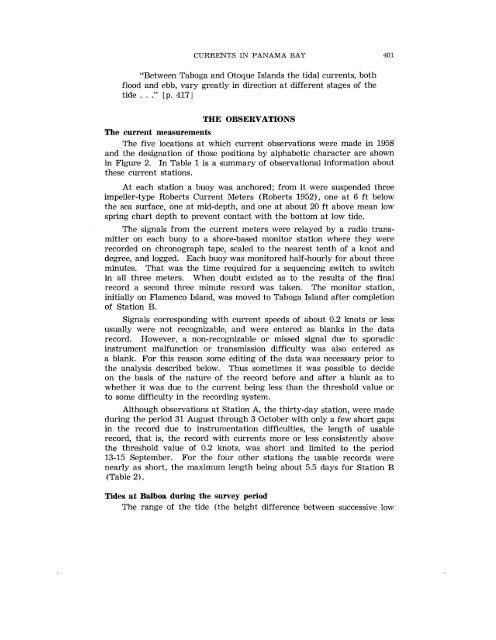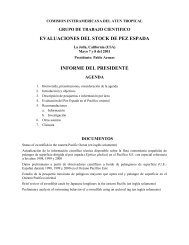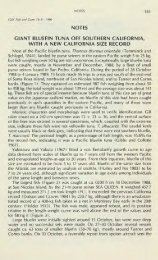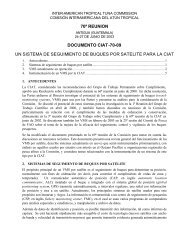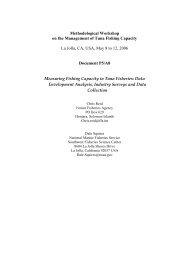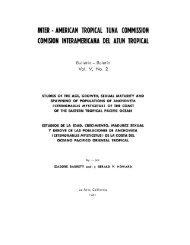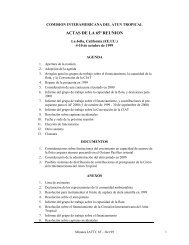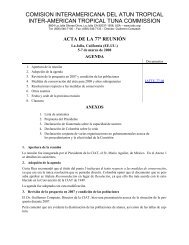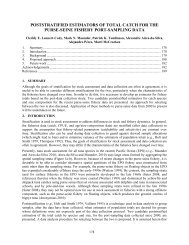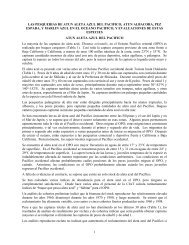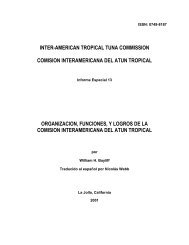t - Comisión Interamericana del Atún Tropical
t - Comisión Interamericana del Atún Tropical
t - Comisión Interamericana del Atún Tropical
- No tags were found...
You also want an ePaper? Increase the reach of your titles
YUMPU automatically turns print PDFs into web optimized ePapers that Google loves.
CURRENTS IN PANAMA BAY401"Between Taboga and Otoque Islands the tidal currents, bothflood and ebb, vary greatly in direction at different stages of thetide ..." [p. 417]THE OBSERVATIONSThe current measurementsThe five locations at which current observations were made in 1958and the designation of those positions by alphabetic character are shownin Figure 2. In Table 1 is a summary of observational information aboutthese current stations.At each station a buoy was anchored; from it were suspended threeimpeller-type Roberts Current Meters (Roberts 1952), one at 6 ft belowthe sea surface, one at mid-depth, and one at about 20 ft above mean lowspring chart depth to prevent contact with the bottom at low tide.The signals from the current meters were relayed by a radio transmitteron each buoy to a shore-based monitor station where they wererecorded on chronograph tape, scaled to the l1earest tenth of a knot anddegree, and logged. Each buoy was monitored half-hourly for about threeminutes. That was the time required for a sequencing switch to switchin all three meterse When doubt existed as to the results of the finalrecord a second three minute record was taken. The monitor station,initially 011 Flamenco Island, was moved to Taboga Islal1d after completionof Station B.Signals corresponding with current speeds of about 0.2 knots or lessusually were not recognizable, and were entered as blanks in the datarecord. However, a non-recognizable or missed signal due to sporadicinstrument malfunction or transmission difficulty was also entered asa blank. For this reason sorne editing of the data was necessary prior tothe analysis described below. Thus sometimes it was possible to decideon the basis of the nature of the record before and after a blank as towhether it was due to the current being less than the threshold value orto sorne difficulty in the recording system.Although observations at Station A, the thirty-day station, were madeduring the period 31 August through 3 October with only a few short gapsin the record due to instrumentation difficlllties, the length of usablerecord, that is, the record with currents more or less consistently abovethe threshold value of 0.2 knots, was short and limited to the period13-15 September. For the four other stations the usable records werenearly as short, the maximum length being about 5.5 days for Station B(Table 2).Tides at Balboa during the survey periodThe range of the tide (the height difference between successive low


